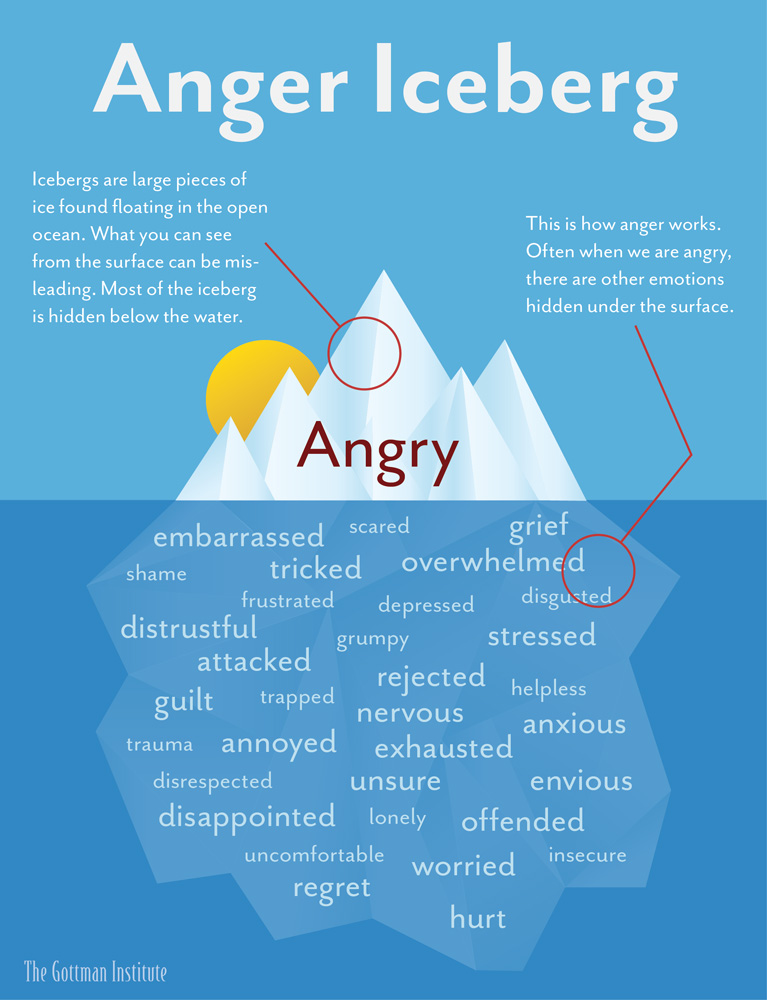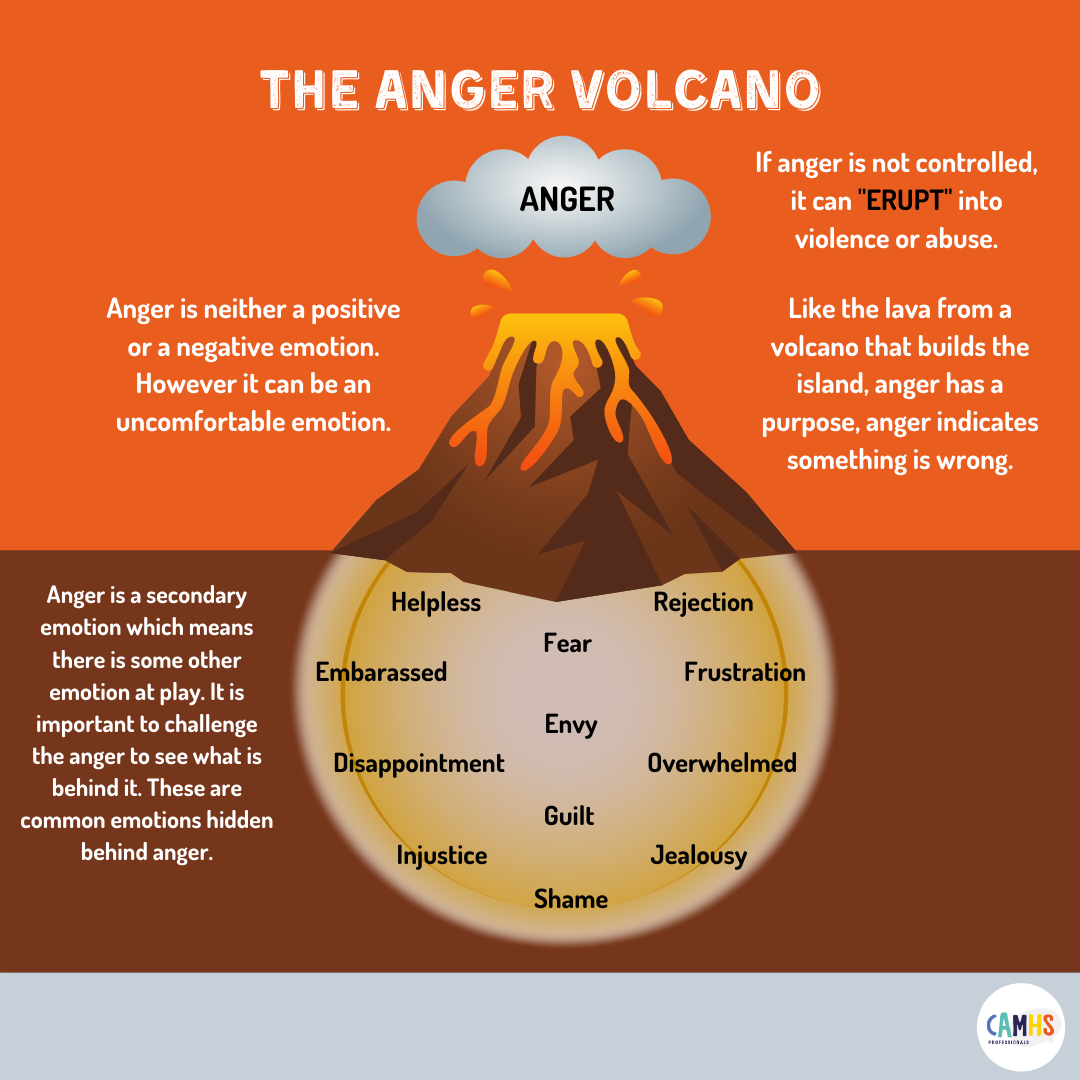Explanation of the “anger iceberg” metaphor
Anger is an emotion that can be difficult to manage, and understanding its complexities is key to controlling it.”Anger Iceberg” metaphor has been used for decades by psychologists as a way of helping people understand the complexity of anger. It assumes that anger is just the tip of the iceberg, with underlying emotions hidden beneath the surface.
This blog post will explain further what this metaphor entails and how it can help you better manage your own feelings of anger. We’ll discuss why acknowledging these underlying emotions is essential for managing your rage effectively and look at practical strategies for dealing with them productively instead of lashing out in moments where you feel overwhelmed.
Why understanding the anger iceberg is important
Understanding the definition of anger issues as well as recognizing signs of anger issues in a man is important for developing more effective strategies for managing and controlling one’s emotions. It can help individuals better understand why they feel angry and how to cope with it in the best possible way.
According to Gottman Institute, the Anger Iceberg theory posits that when we get angry, we are actually experiencing several other emotions such as shame, guilt, embarrassment, pain, exhaustion, anxiety, fear, loneliness, and grief which are buried beneath our conscious awareness. Recognizing these underlying feelings and addressing them head-on instead of simply reacting out of anger or frustration in any situation can help us find more constructive ways to cope with our emotions.
The Visible Part of the Anger Iceberg
The visible part of the anger iceberg is what we are aware of consciously. It can manifest itself in obvious ways, such as verbally lashing out or physical expressions of aggression. It is important to understand why we experience this “visible” anger and how it can be managed.
We can consider the visible part of the anger iceberg the following:
• Verbal outbursts (for example, yelling or screaming);
• Explosive anger (for example, breaking things or throwing objects, punching);
• Exaggerated reactions to perceived slights;
• Hostility and aggression (for example, blaming and accusing others).
There is also a less expressive way of expressing anger:
• Resentment
• Withdrawing or isolating oneself
How to Identify the Hidden Part of the Anger Iceberg
The reasons for the Visible Part of the Anger Iceberg usually come from beneath – feeling threatened, frustrated, resentful, scared, or powerless. It can also be a way of getting attention or expressing our needs. Learning how to recognize and address them productively is key to managing anger. So, if you are wondering “why am I always angry and irritated for no reason?”, the answer may lie in looking beneath the surface and uncovering hidden, underlying emotions.
Examples of hidden causes of anger
To understand the causes of hidden causes of anger it would be very useful to get to know about primary and secondary emotions because primary emotions are often the root of our secondary emotions.
Primary emotions imply the physiological, instinctive emotions that often come before any cognitive processing. They include:
- fear
- joy
- surprise
- disgust
- sadness
Very often these primary emotions are the root of our secondary emotions, such as anger. Secondary emotions can be seen as the cognitive processing of primary emotion and then expressed as
- anger
- frustration
- guilt
- shame
- resentment, etc
They are the ones that we have control over and can learn to address more productively instead of letting them manifest in explosive behavior.
Therefore, hidden causes of anger are typically primary emotions that are not being addressed or expressed in an unhelpful way. Gottman Institute provides the following illustration of what Anger Iceberg consist of:

Examples anger manifestation
Let’s give a few cases illustrating the hidden causes of anger (3 situations):
Situation 1
John was walking down the street when he was unexpectedly bumped into by a stranger. His primary emotion of fear triggers a secondary emotion of anger. He starts yelling and his body language changes as he is filled with anger triggered by surprise.
Situation 2
Jane is in a meeting with her colleagues when she hears one of them criticize her work. Her primary emotion of sadness triggers a secondary emotion of anger. She feels her face get hot and her fists clench as she gets angry at being disrespected in front of her colleagues.
Situation 3
John is in a heated discussion with his partner when he feels like they are not listening to him. His primary emotion of frustration triggers a secondary emotion of anger. He starts to raise his voice and becomes more aggressive as he feels powerless in the situation.
In all three situations, the primary emotion is the root of the anger that manifests itself in an unhelpful way. If we can learn to recognize our primary emotions and address them productively, we can better manage our anger and its negative consequences.
Some psychologists can also use another metaphor to describe anger – “Anger Volcano”. Here is the illustration by CAMHS Professionals:

By noticing and understanding the primary emotion that is behind our anger, we can learn to better manage it and express it in a more productive way.
How to Identify the Hidden Part of the Anger Iceberg: Techniques for identifying hidden causes of anger
“I’m angry all the time” – does this feeling seems familiar to you? Or maybe you are thinking “why do I get so angry over little things”? It’s likely that the root of your anger lies beneath the surface. Outwardly we may express our anger in a visible way, such as by shouting or lashing out at others. This is usually just a symptom of an underlying emotion. In this section, we will explore some techniques for identifying these hidden causes of anger and how to address them productively.
- Identifying triggers
Take time to think about situations that trigger your anger and try to pinpoint the primary emotion that is behind it.
- Take notes
When you feel angry in a certain situation, take some time to write down the thoughts and feelings that come up for you.
- Practice mindfulness
Being mindful is an effective way to be aware of your emotions and learn to manage them.
- Let it out and observe
If a situation builds up to a point where it’s hard to contain your anger, take some time to express and release it in a safe space. Talk it out: Talking to a trusted person can help you understand the cause and effect of your anger and any hidden emotions that may be underlying it.
- Try to understand the triggers of other people’s anger
By understanding the underlying primary emotions of other people’s anger, you can learn to better manage your own. By learning to identify our own triggers and the hidden causes of our anger, we can better manage it and express it in a more productive way.
Anger management skills for adults and teenagers
There are coping mechanisms for dealing with anger. Some of these may include:
- Breathing exercises
Taking deep breaths will help to calm down the body’s physical response when feeling angry.
- Relaxation techniques
Activities such as yoga or mindful meditation can help to reduce stress and relax the body.
- Counseling
Professional counseling or coaching sessions can provide personalized advice and strategies for managing anger.
- Time management
Scheduling tasks, taking regular breaks, and setting realistic goals can help to reduce the feeling of being overwhelmed, therefore – feeling angry.
- Exercise
Exercising regularly will help to release endorphins which can help to reduce stress and improve your mood.
- Distraction techniques
Distracting yourself with hobbies or activities that you enjoy can be a great way to take your mind off of whatever is making you angry.
By practicing these strategies for managing anger, adults and teenagers alike can learn how to better control their emotions. Taking the time to learn how to manage our anger will bring positive outcomes in all aspects of life, from relationships to work.
The Bottom Line
Anger is a normal emotion, but it can become problematic if not managed effectively. There are many factors that contribute to anger issues. The primary emotion behind it can often be identified and addressed in order to better manage our emotions. Taking time to identify triggers of your own or other people’s anger and practicing coping mechanisms will help you learn how to control your feelings of anger.
People who struggle with the “I’m angry all the time” issue should take an anger symptoms test for further guidance on how best they can address their emotional health needs. We can ultimately improve our relationships with ourselves and others around us. All we need to do is to take steps towards understanding why people get angry easily and implement strategies for managing those thoughts and feelings productively.


